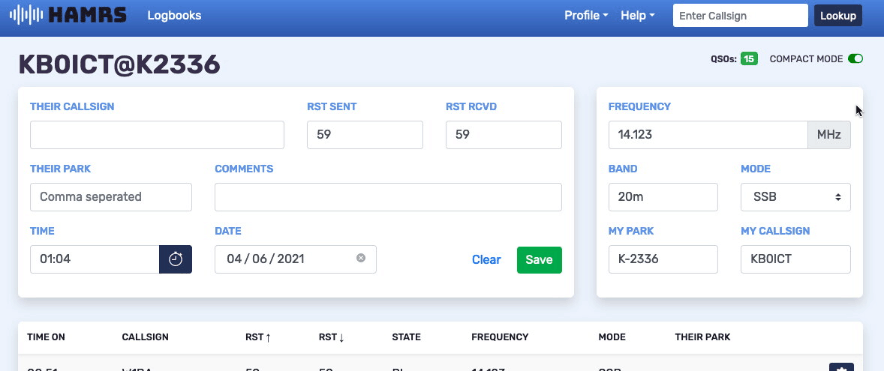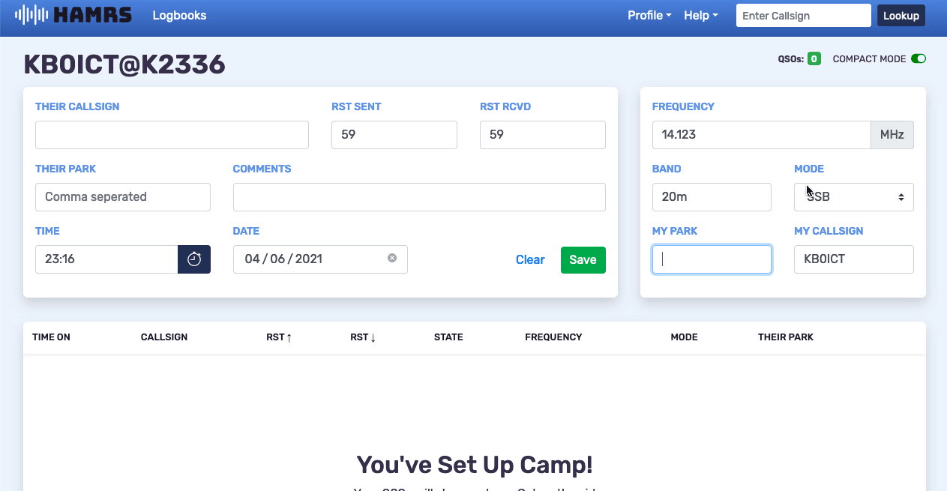Jarrett, as I understand it, the fields on the right-hand side of the screen are inserted into each record at the time a QSO is logged. One can change them mid-stream (e.g. partway through an activation). Subsequent QSOs will contain the new data entered into these fields; older ones contain the prior data.
That is the way it should work for some fields like the mode and frequency. Those don’t change very often.
But assuming by design a log is supposed to cover a single event, such as a park activation, other fields most likely will apply to the entire log: Station Callsign, Operator, my park number, my grid square, my state, my county, etc. A change to any one of these should impact the entire log, not just the QSOs entered from that point on.
My point was that these log-wide fields, some of which could be optional, could be appended to each and every QSO record as discrete fields at the time of export to an ADIF rather than at the time each QSO is logged. That would speed things up during logging, but also allow a single change afterwards to affect the entire log (for instance, if I didn’t have my grid square or county at the time of the activation, but wanted to add it later; or wanted to generate a log for a second park during my two-fer activation).
When you proceed to developing logs for other portable events, such as field day, these log-wide fields will include such things as the station class, power category, etc. There are no ADIF fields for these entries. They would be exported in the header section of a cabrillo-formatted file.
I guess it’s really a design decision–keeping additional hidden fields associated with each and every QSO at the time a contact is logged has the advantage of flexibility, while log-wide fields offer more convenience.
—Break break—
Important: Is “My Callsign” always written to the Station_Callsign ADIF field? Which ADIF field does “Club Callsign” go into? Normally my own call goes in the “Station_Callsign” field, and for WWFF, my callsign also goes into the Operator ADIF field. But if operating under a club call, the club’s call sign goes into the Station_Callsign ADIF field, and MY call goes into the Operator ADIF field. Please make sure you switch the destination if a Club Callsign is entered, or just call the fields “Station callsign” and “Operator callsign” to avoid confusion and align them accordingly.


 I want to tab a few fields and move on to the next person in my pileup. If I can autofill information, all the better. But I don’t see the main log templates changing much. If someone mentions a field they’d like to see, and more folks chime in with a ‘me too’, I’ll consider adding it, but it’s going in the hidden section
I want to tab a few fields and move on to the next person in my pileup. If I can autofill information, all the better. But I don’t see the main log templates changing much. If someone mentions a field they’d like to see, and more folks chime in with a ‘me too’, I’ll consider adding it, but it’s going in the hidden section 